Spotlight on Research
Who has received funding for new research? What findings and results are being published in academic journals? Under the heading Spotlight on Research, we provide a selection of the latest news about KTH research successes.
EU grant for a social robot
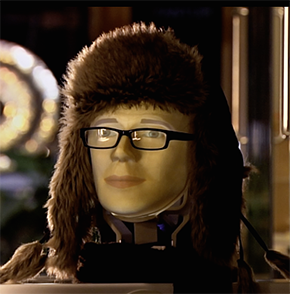
Swedish tech company Furhat Robotics, with its origins in KTH, has received SEK 24 million in support from the EU Commission Innovation Council. The company, which is developing a social robot, Furhat, was started by three KTH researchers: Jonas Beskow, Professor, Gabriel Skantze, Professor and Samer Al Moubayed, affiliated researcher and company CEO.
Furhat can make eye contact, respond to greetings and ask questions, speaks 40 different languages and has over 200 voices to choose from. The robot consists of a face with a 3D mask in plastic, onto which different facial movements and appearances are projected via light effects.
The grant from the EU is to be used in part to finance the manufacture of more robots.
Eleven KTH projects with a big social impact
A combined total of eleven research initiatives from KTH are amongst 100 Swedish research projects named by the Royal Swedish Academy of Engineering Sciences (IVA) as having the biggest impact on industry and society in the future. The KTH projects include Foreseeti, a start-up that develops software, securiCAD, that simulates cyber-attacks to help make security assessments of systems architecture. The senior researchers are Mathias Ekstedt, Robert Lagerström and Pontus Johnson.
In another research project, four researchers are working on a system to develop industrial welding in a more sustainable direction. The aim is to reduce emissions of greenhouse gases while at the same time maintaining Swedish industry’s position on the world market. The project team includes Eric Lindgren, Thomas Stenberg, Martin Engman and Zuheir Barsoum.
Another project, with Örjan Smedby and Chunliang Wang, aims to improve the treatment of common diseases such as cancer and dementia. With the aid of image biomarkers, the idea is to be able to provide more effective treatment and avoid unnecessary side-effects for previously diagnosed diseases. More KTH projects (in Swedish) on the 100 list.
Tiny sensors measure air quality
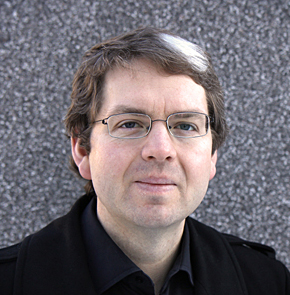
Kristinn B. Gylfason, Associate Professor of MicroSystem Technology at KTH, is one of several researchers on an EU financed project, ULISSES , looking to develop a new type of sensor that measures air quality, such as the presence of air pollutants and greenhouse gases. The sensors are housed in a chip that can be embedded in smaller, personal, portable devices or installed in public environments in street lighting, buses, taxis or drones.
The technology offers both the public and professionals the opportunity to monitor and make demands on air quality, and can eventually be a useful tool for urban planners, employers and landlords to ensure a healthy indoor and outdoor environment. The technology is based on optic gas sensors where silicon photonics is combined with 2D materials. The hope is that the sensors should be able to be manufactured on a large scale at low cost.
New WCs for safer homes
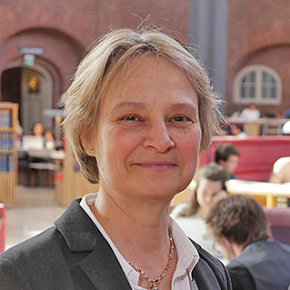
More and more elderly people are being cared for at home and small bathrooms mean care personnel find it difficult to perform their work in a safe way. Linda Rose Associate Professor at the Department of Biomedical Engineering and Health Systems at KTH, has been granted SEK 3.6 million by insurance company AFA Försäkring, to investigate how technical aids such as rotatable toilet seats can contribute to a better working environment and safer homes. The aim includes reducing the risk of fall and repetitive strain injuries. The work involves building a prototype bathroom for testing and evaluation purposes.
Four researchers are making Intel processors more efficient
Researchers at KTH have developed software to make Intel processor calculations more efficient. The researchers have utilised the structure of the processor cache memory to enable faster calculations. Although this potential has existed for several years, it has not previously been documented or used. As a result, the processor can work more efficiently–
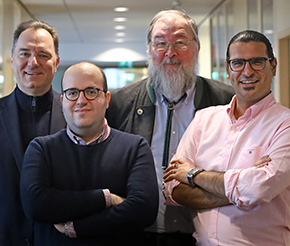
the same calculation can be performed using less energy.
The researchers – Alireza Farshin, Amir Roozbeh (an industrial scholarship doctoral student from Ericsson), Gerald Q. Maguire Jr. and Dejan Kostic – have demonstrated that the performance can be improved when sending and receiving network data.
The research, done in cooperation with Ericsson, has resulted in three patent applications.
Their research has been published in a scientific article, “Make the Most out of Last Level Cache in Intel Processors”, in association with the EuroSys 2019 Conference from 25-28 March in Dresden, Germany.
Breakthrough in X-Ray science
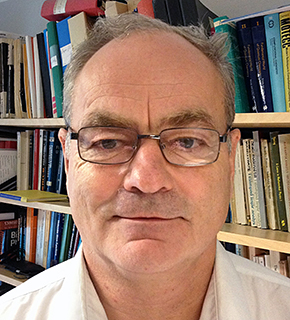
Researchers at KTH have made a breakthrough within X-Ray spectroscopy, which can eventually provide a better understanding of how matter and materials work. The researchers have achieved what was previously thought impossible, namely to separate the refined rotational structure of molecules and materials with the aid of X-Ray light.
By irradiating carbon monoxide molecules with X-Ray light, Hans Ågren and Faris Gel'mukhanov, Professors at KTH, have created a chain reaction where highly energised electrons are emitted from the carbon atom. This delivers an impulse to the molecule that leads to rotational motion on a time scale of no more than a few femtoseconds, corresponding to a characteristic temperature of 10,000 K. By adjusting the intensity of the X-Ray light, the researchers have also been able to influence how fast the carbon monoxide molecule rotates.
In the longer term, the discovery is expected to offer improved possibilities for hyperspectral imaging – measurements over time and space – of the composition and dynamics of different materials with high resolution, which in turn, will enable a better understanding of what matter and materials look like and how they work.
This research, published in The Proceedings of the National Academy of Science USA, PNAS , has been pursued at the SOLEIL synchroton laboratory in France.
Text: Christer Gummeson